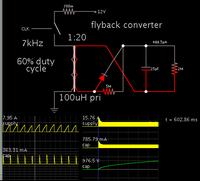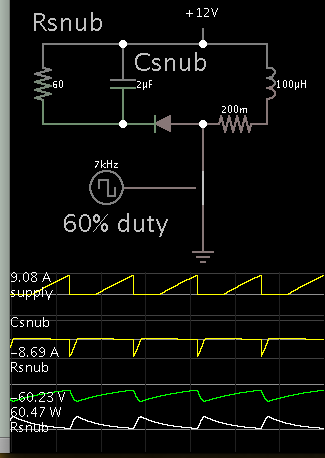raja_rajan
Newbie level 6
hi,
I am using discontinuous flyback transformer of current rating of 8A and frequency is 100khz with 60% on and 40% duty cycle. I am using fod3184 optoisolator to drive the igbt which supports upto 150khz. using this transformer, i have to charge 25uf/1100v capacitor upto 950v. while connecting the capacitor it will charge upto 100v and didnt charge after that. while checking with scope i got pwm fod3184 without connecting capacitor, but connecting capacitor i got pwm charging upto 100v and fod3184 stops pwm after that because of loading.
100khz pwm is generated from lpc2148 and given to fod3184. It supports upto 250Khz, 3A.
Tansformer Spec are:
Turn ratio: 1:40.
input-12v dc;
output-2500v. while putting two high speed diodes uf5408, i am getting 1400v dc
Application:
I want charge the capacitor every 1 Sec upto 950. (Medical laser)
can anyone please give solution for the problem?.
I am using discontinuous flyback transformer of current rating of 8A and frequency is 100khz with 60% on and 40% duty cycle. I am using fod3184 optoisolator to drive the igbt which supports upto 150khz. using this transformer, i have to charge 25uf/1100v capacitor upto 950v. while connecting the capacitor it will charge upto 100v and didnt charge after that. while checking with scope i got pwm fod3184 without connecting capacitor, but connecting capacitor i got pwm charging upto 100v and fod3184 stops pwm after that because of loading.
100khz pwm is generated from lpc2148 and given to fod3184. It supports upto 250Khz, 3A.
Tansformer Spec are:
Turn ratio: 1:40.
input-12v dc;
output-2500v. while putting two high speed diodes uf5408, i am getting 1400v dc
Application:
I want charge the capacitor every 1 Sec upto 950. (Medical laser)
can anyone please give solution for the problem?.

